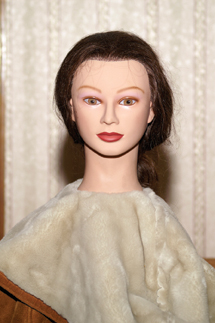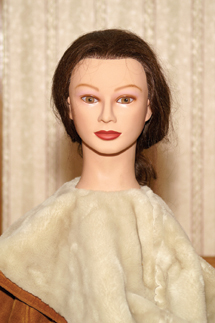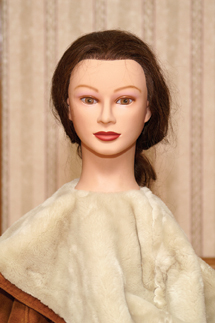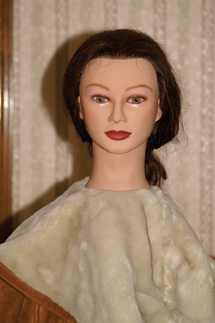On-Camera Flash; Softbox In A Pocket Page 2
The first image I made was with direct, on-camera flash to be used as a comparison (#4). You can see the heavy shadow on the wall 5 ft behind the bust.
 |
|
|
The shadow cast by the Westcott Micro Apollo was significantly lighter than that cast by the direct flash, but still quite evident (#5). However, I was able to use the Micro Apollo on an assignment that involved nearly 20 employees standing in the open shade of their workplace entrance. While the image is not reproduced here, it managed to cover the entire group in an even spread of fill light.
 |
|
|
The MilaGrid PowerGrid and the LumiQuest 80-20 bounced partly from the ceiling created the softest shadows due to the fill light from above. The results were almost identical; it would be hard to choose between the two, so I'm only showing one here (#6). The only limitation to using either of these is the height of the ceiling and the power of the flash. Even so, if the ceiling were higher than the recommended 10 ft (for both of these), the light cast directly at the subject will give results similar to the Micro Apollo.
 |
|
|
The ability to use head-on diffuse light or partial bounce from the ceiling makes the LumiQuest ProMax System the most versatile. Using the white insert and the diffuser with the 80-20 gave results similar to those obtained by bouncing the light off the ceiling (#7).
 |
|
|
The Dot Line Universal Flash Diffuser is like a sock pulled over the flash head. The flash is aimed at a 60Þ angle toward the ceiling. The shadow falls almost identically to the one made by the 80-20 but slightly darker, though not displeasing (#8).
 |
|
|
The advantage of this design is it is inexpensive, small and light, and can
be flattened and carried in a pocket to take anywhere.
Finally, there is the LumiQuest Soft Screen. While diffusing the pop-up flash
would seem to be a good idea, in practice it didn't work so well. The
Soft Screen threw a heavy shadow which haloed the far side of the bust and cannot
be displaced even with a flash bracket (#9).
 |
|
|
As I wanted to test the on-camera flash diffusers with more than just a pretty face I took them with me on my next food assignment. I tried all of them and was pleased with the results. Although the lighting was not as elegant as the backlit Beef Wellington, there was a certain drama, which I liked. They also allowed me to hand hold the camera and move freely in and around the subject without concern for the position of the light, as it always moved with me. I was able to capture some interesting images of an otherwise dull subject...croutons (#10).
 |
|
|
Manufacturers/Distributors
Dot Line Corp.
9420 Eton Ave.
Chatsworth, CA 91311
(800) 423-2624
www.dotlinecorp.com
LumiQuest
28540 Durango Dr.
New Braunfels, TX 78132
(830) 438-4646
www.lumiquest.com
MilaGrid
3616 Henry Hudson Pkwy,
Ste. 7D-N
Bronx, NY 01463
(917) 903-7191
www.MilaGrid.com
STO-FEN Products
PO Box 7609
Santa Cruz, CA 95061
(800) 538-0730 (order)
(831) 427-0235
www.stofen.com
The F.J. Westcott Company
1447 N. Summit St.
Toledo, OH 43604
(800) 886-1689
www.fjwestcott.com
- Log in or register to post comments

































